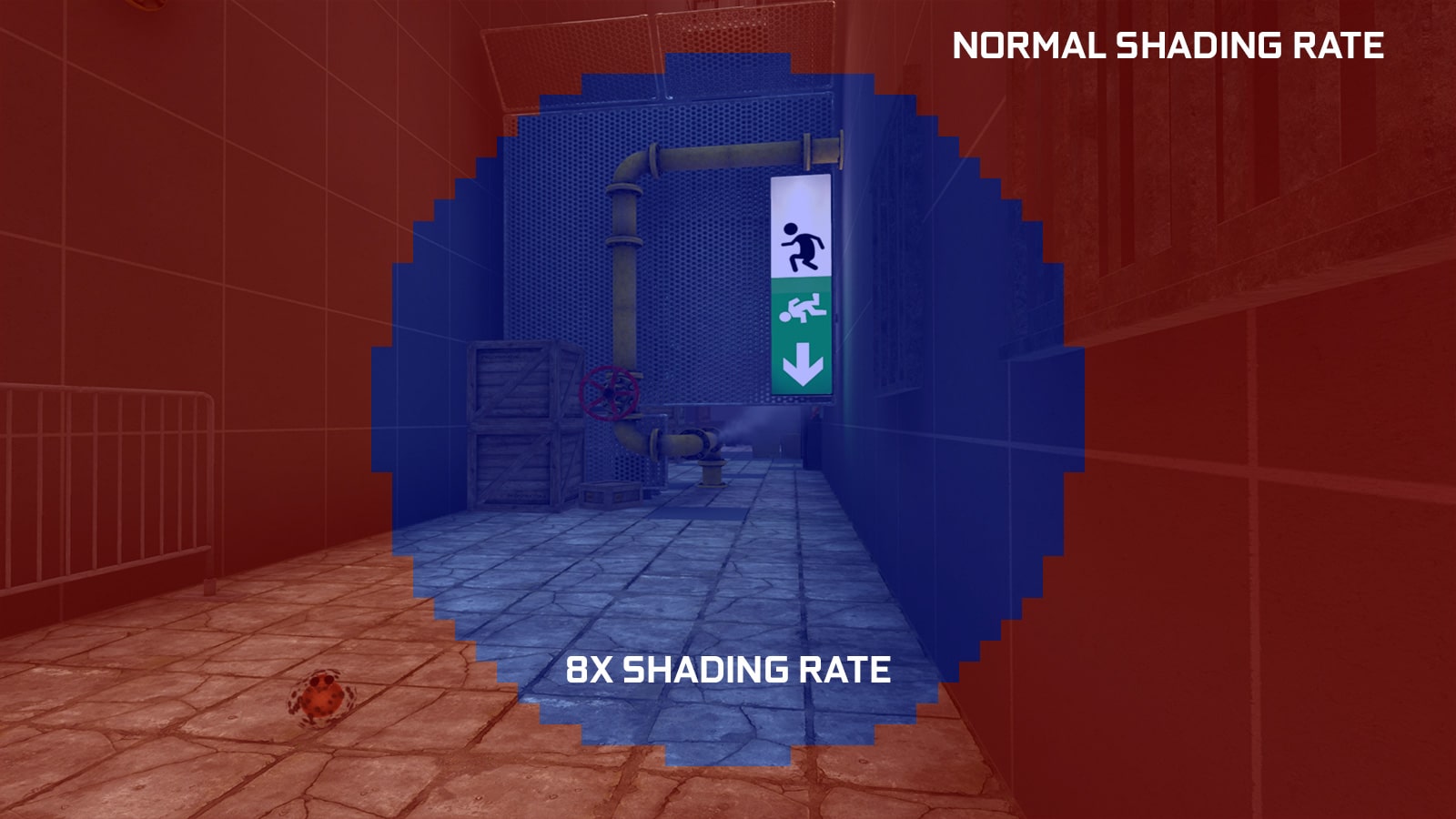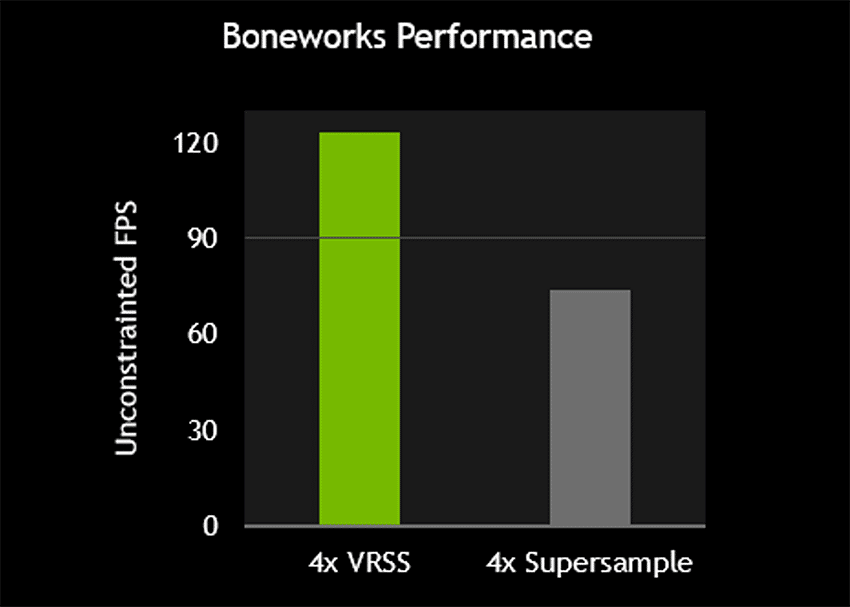NVIDIA just released a new driver feature which dynamically increases the resolution in the center of the lenses instead of wasting performance on the entire view. It currently supports over 20 VR games.
PC VR users often increase the rendering resolution of a game to beyond the resolution of the physical display panels. The result is a sharper image with less aliasing, and it makes text easier to read. This is called supersampling, and is available via the Oculus Debug Tool or SteamVR Settings.
Supersampling takes a significant performance hit as it demands the graphics card to render many more pixels. This means users have to use a relatively low supersampling value to maintain performance. Additionally, since many titles don’t support dynamic supersampling the user has to use a trial and error approach to find the right balance.
NVIDIA’s new feature, called “Variable Rate Supersampling” (VRSS), solves both of these problems. It dynamically applies up to 8x supersampling in the center of the view only, where you’re almost always looking in VR.
VRSS will only apply when there is enough GPU headroom left over to do so, and as such you’ll still be able to maintain refresh rate framerate in VR (avoiding sickness).

This is a driver-level feature, so it doesn’t need integrated by developers. However, it will only work on a specific list of 24 games which have been tested by NVIDIA. As of writing, these are the supported titles:
- Battlewake
- Boneworks
- Eternity WarriorsTM VR
- Hot Dogs, Horseshoes and Hand Grenades
- In Death
- Job Simulator
- Killing Floor: Incursion
- L.A. Noire: The VR Case Files
- Lone Echo
- Mercenary 2: Silicon Rising
- Pavlov VR
- Raw Data
- Rec Room
- Rick and Morty: Virtual Rick-ality
- Robo Recall
- SairentoVR
- Serious Sam VR: The Last Hope
- Skeet: VR Target Shooting
- Space Pirate Trainer
- Special Force VR: Infinity War
- Spiderman: Far from Home
- Spiderman: Homecoming – Virtual Reality Experience
- Talos Principle VR
- The Soulkeeper VR
NVIDIA claims that it will continue to test more VR games and will add them to future driver releases.
The company’s benchmark chart is claiming a roughly 50FPS increase over using regular supersampling of the same quality.

This of course isn’t the first time we’ve seen this concept applied to VR. Facebook’s standalone VR headsets use a similar idea in reverse– reducing the quality of the edges of the view to save performance and thus allow intensive games to be ported.
Before VRSS back in 2018, NVIDIA itself gave developers the ability to supersample in the center of the view via the VRWorks SDK. However, only a handful of apps added support for this. The lack of developer adoption may be why this is now an adaptive driver level feature.
Based on our experience with Oculus standalone headsets and PC games using VRWorks, expect the differences in resolution between the center and edges to be noticeable, but not distracting.
Given that VRSS is applied automatically so that it won’t affect performance, it seems like a feature that all PC VR users with an RTX GPU should enable. You can do so in the NVIDIA Control Panel under 3D Settings. Set it to ‘Adaptive’ rather than ‘Always On’. Currently, it needs to be applied for each game.
Don’t forget to check out our CES 2020 Coverage Hub right here for all of the latest announcements for VR and AR tech from the show!


























